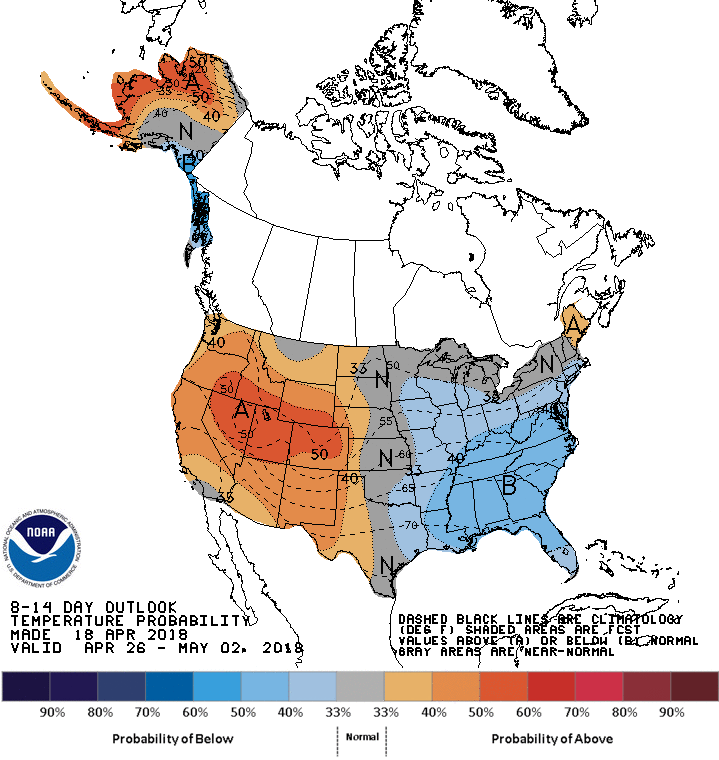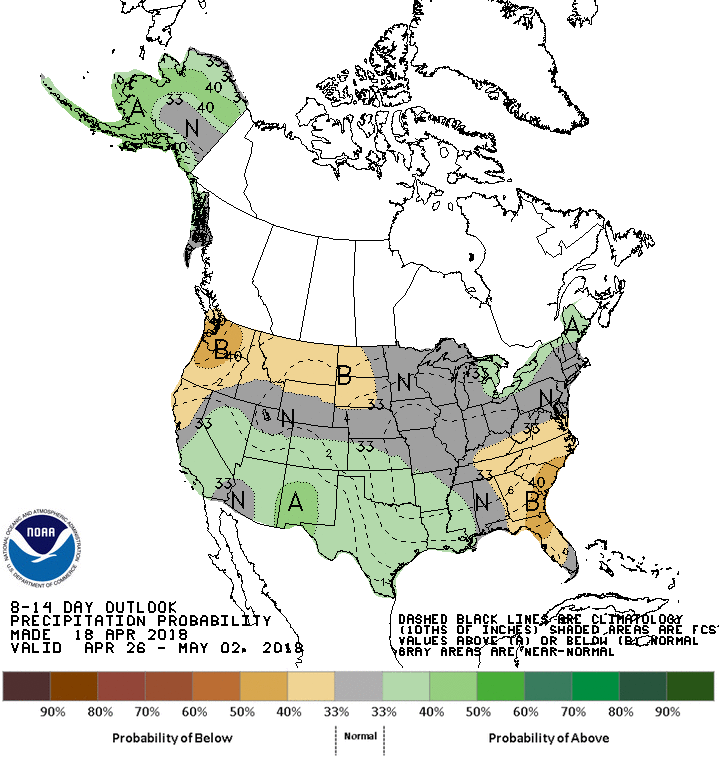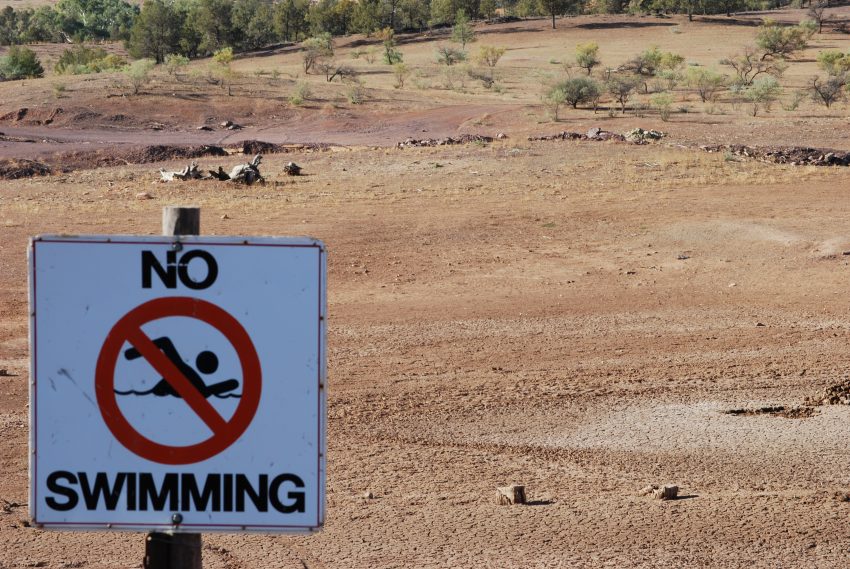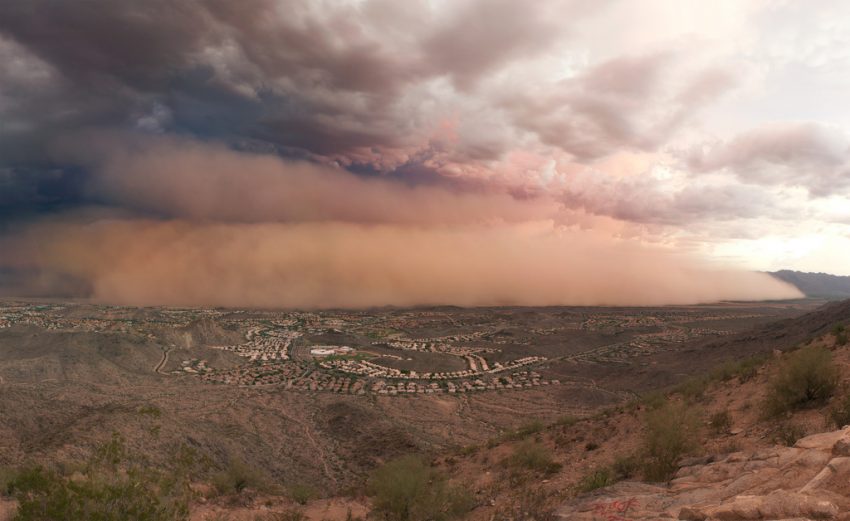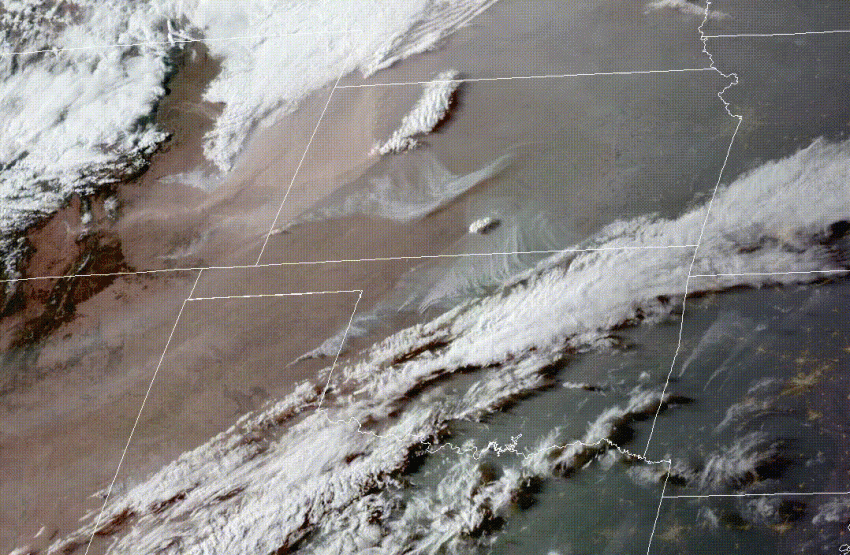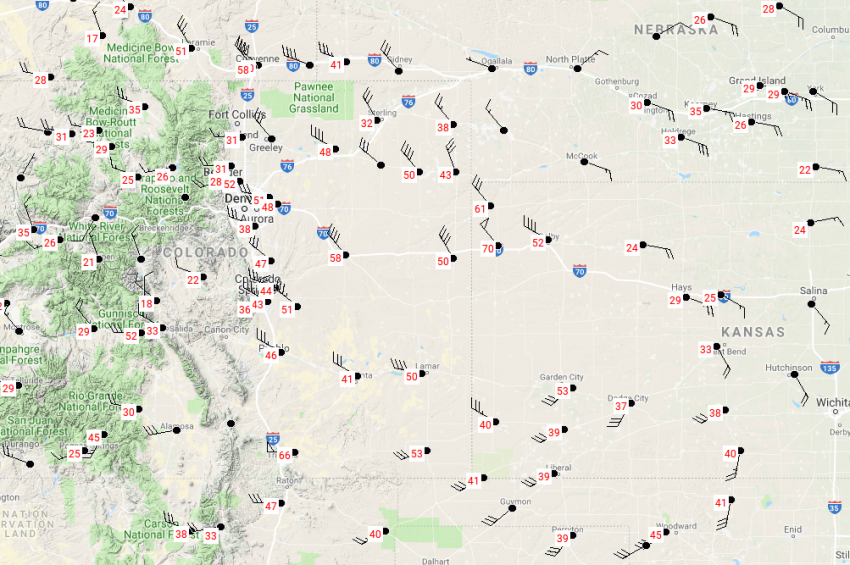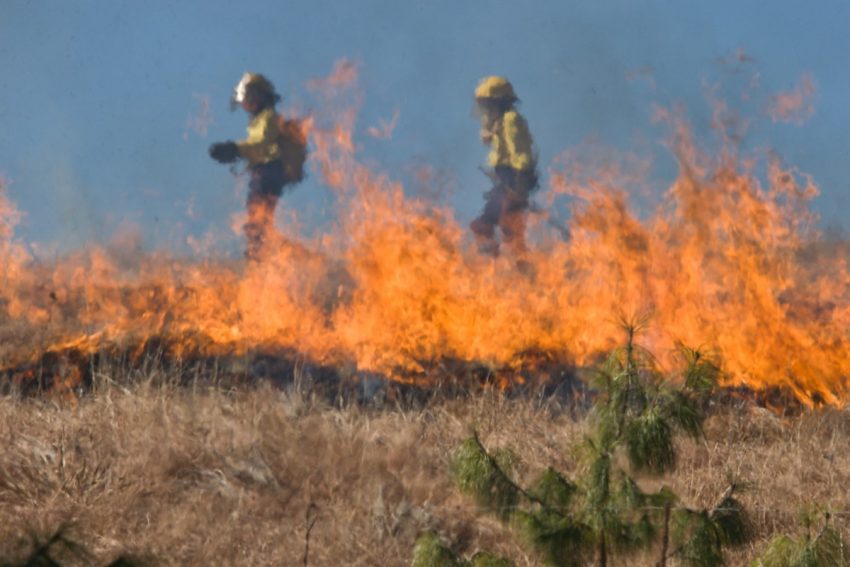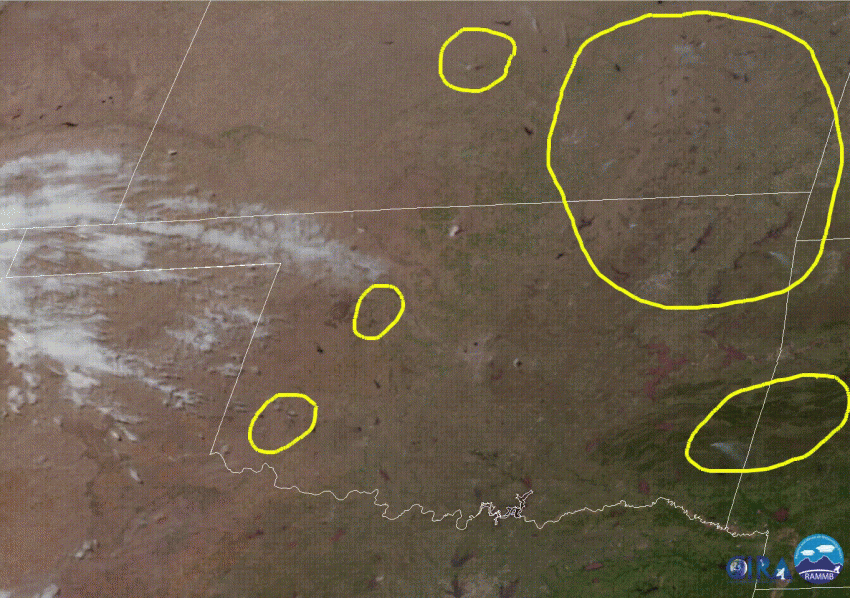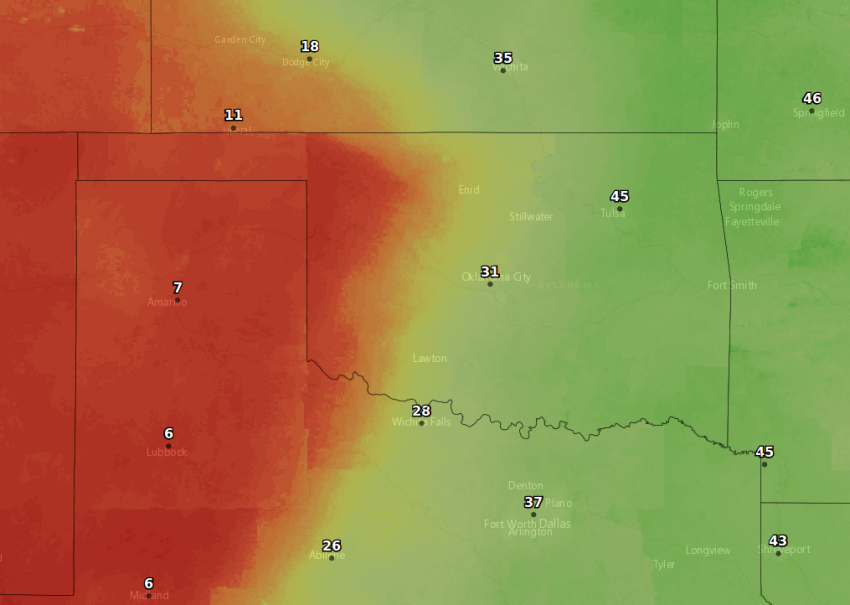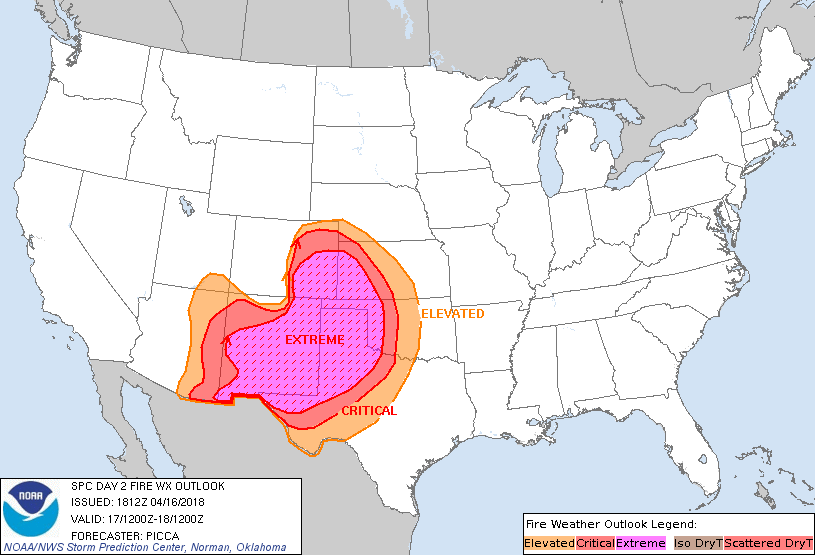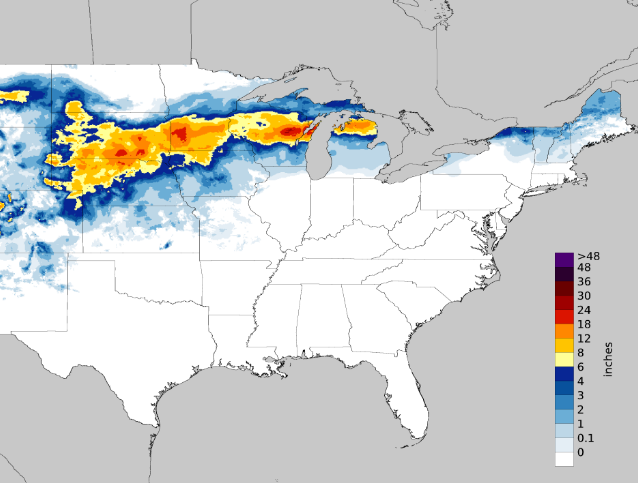No Relief for Drought-Ravaged Areas of the High Plains
Wildfires raged out of control on Tuesday across parts of the Plains, especially Oklahoma, Kansas, and Colorado. The system responsible for high winds and hot temperatures has moved off to the east. However, soil conditions will remain dangerously low thanks to more than six months of little to no precipitation. This is particularly true from southwest Kansas through the Panhandles to northeastern New Mexico. Other than 0.24″ of rain recorded on March 27th, Amarillo has seen no measurable precipitation since early October.
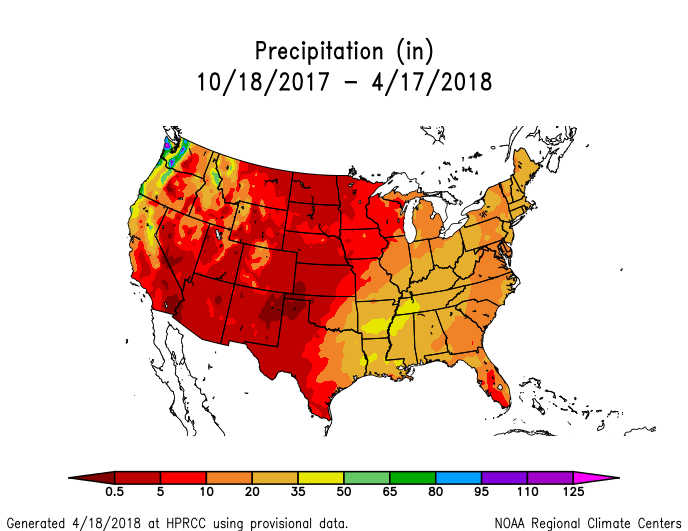
This kind of extended drought creates an abundance of dry tinder, plant and other debris that ignites easily. Any increase in winds and/or temperature means an extreme wildfire threat. Minor brush fires quickly grow beyond the ability to be controlled. The graphics at bottom reflect the forecast for the next few weeks with a decent chance of some passing rain. Still, minor moderation of the drought won’t diminish the wildfire threat significantly. Indeed, lightning-bearing storms have been known to spark wildfires in sensitive conditions.
Large fires continue to burn in western Oklahoma (Hwy 270 south east of Seiling, OK). This video was captured by Brandon Rhea. His construction crew, led by Doug Nihart, had to move their equipment today. Ebert Construction of Wamego, KS. #OKwx #wildfire pic.twitter.com/svycsFi0Kw
— Aaron White (@AaronWhiteTV) April 18, 2018
